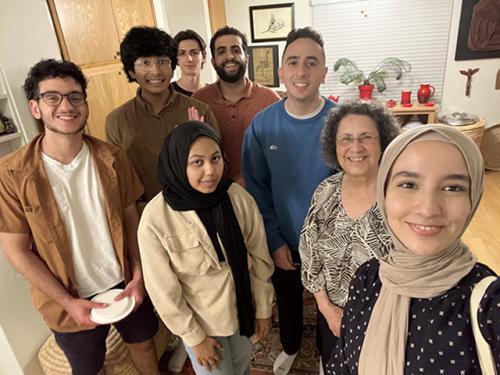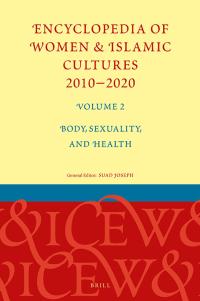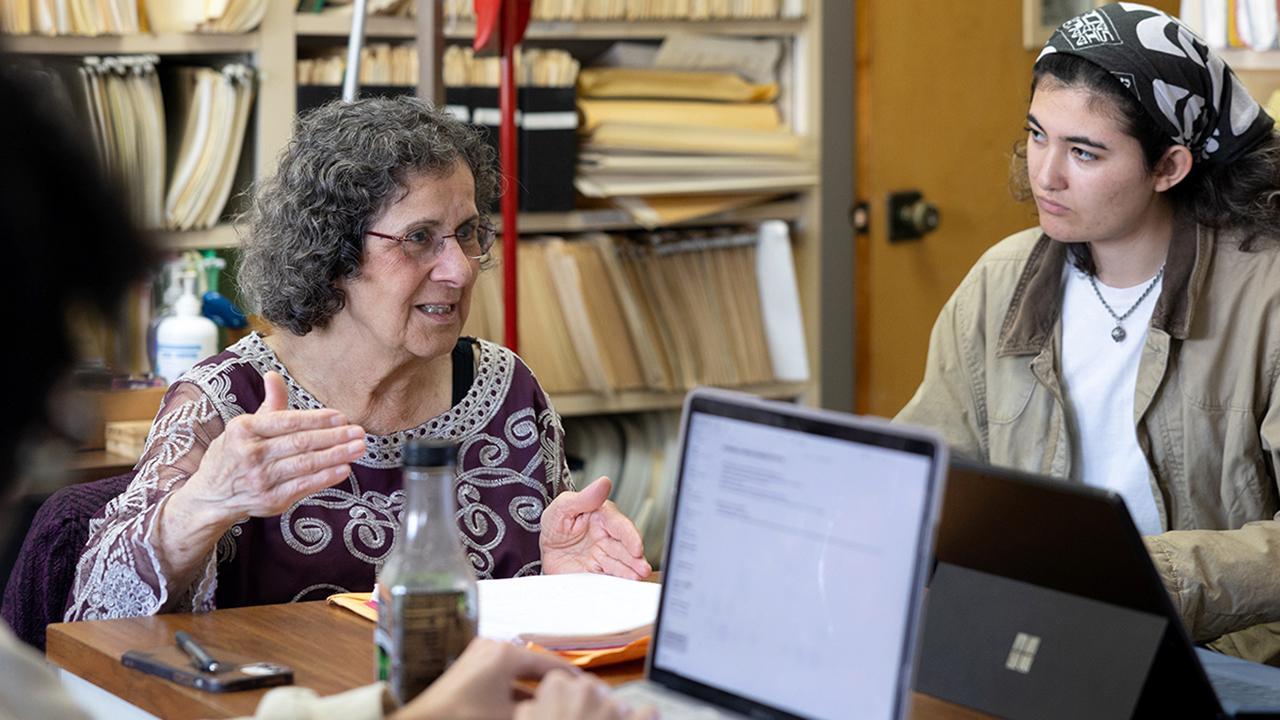After the 9/11 attacks on the World Trade Center in 2001, Suad Joseph found something unexpected in the nation’s leading newspaper reports.
She had been studying representations of Muslim women in media and was comparing coverage between The New York Times and Wall Street Journal. While the two newspapers could not be more different politically based on their editorial pages, Joseph was concerned to find that they both tended to represent Muslim women as oppressed, outside of society and with hardly any agency.
“This said to me that if the leading liberal newspaper and the leading conservative newspaper can agree on these representations, it points to the kind of public narrative we have about Muslims,” said Joseph, a distinguished research professor in the UC Davis Department of Anthropology.
We found, to our dismay, that the representations of Muslim women in The New York Times often corresponded with whether we have a friendly or negative relationship with their country." – Joseph
Since then, Joseph has expanded this work to encompass media representations of Muslim women across decades and media, focusing primarily on print news media. She also became founding editor of an encyclopedia on Islam and women that today is the only reference of its kind in the world.
Islam in the world
Islam is the world’s second most prominent religion with an estimated 1.9 billion practitioners, and is projected to match Christianity in terms of followers by 2050. Muslims are a majority in Egypt, Lebanon, Iraq, Nigeria, Pakistan, Bangladesh, Türkiye, Indonesia and many other countries across the Middle East, South Asia and Africa.
Joseph studies how Muslims, particularly women, are represented in the United States and Western countries in general. She has found that these representations of women tend to have something in common: they are not about the women themselves.

Suad Joseph (second from right) and her UC Davis student researchers. (Courtesy of Suad Joseph)
This first became clear to Joseph when she began to examine media coverage after 9/11. With help from her team of graduate and undergraduate student researchers, she analyzed how The New York Times, the leading newspaper in the United States, represented Muslim women from 1979 to 2011.
“We found, to our dismay, that the representations of Muslim women in The New York Times often corresponded with whether we have a friendly or negative relationship with their country,” said Joseph.
Take representations of women in Saudi Arabia and Iran, for example. In these two countries, women have similar levels of freedom and participation in society. However, Saudi Arabia is a longtime United States ally. Iran has been an adversary since the country’s revolution in 1979.
“With Iran, we spend an awful lot of time talking about how women don't get to be in politics or have the higher positions in the labor market or freedom of dress,” said Joseph. “For Saudi Arabia, where women have also struggled over those issues, we tend to say the culture is changing, there’s progress, there's hope. When we talk about Iran, we make it seem as if it is much less changeable.”
This research recently culminated in the publication of the book Reporting Islam in 2023.
A comprehensive knowledge base of women’s contributions
Prior to the 1980s, said Joseph, there had not been comprehensive or complete works of scholarship that could counterbalance misrepresentations of Muslim women. There was scholarship about women in the Middle East but nothing about Muslim women globally.

In 1995 the publisher Brill, the oldest publishing house of Europe, approached Joseph about the idea for an encyclopedia on Muslim women. After four years of discussions, she helped transform the project into one that would include all Muslim women in Muslim minority countries and all women in Muslim-majority countries.
Joseph became founding general editor of the Encyclopedia of Women and Islamic Culture (EWIC). The first edition, the first volume of which was published in 2003, was immediately recognized as a valuable resource. It received an award and the highest rating of “Essential” from the magazine CHOICE, which provides recommendations for what libraries around the world purchase for their collections.
Soon after, Joseph and her editorial board began publishing supplements building upon the first print edition, which by then was also online. The second print edition of the encyclopedia, published in 2021, assembles each of the 20 supplements in a nine-volume set that totals nearly 2 million words. In January 2024, this second volume of the second print edition was named an “Outstanding Academic Title” by CHOICE magazine.
All together, EWIC now encompasses two print editions, two online editions and an edited anniversary volume. In all, the encyclopedia has published over 1,500 articles by over 1,200 authors from research disciplines across the social sciences and humanities who cover topics including arts, medicine, health, economics, politics, social media and hundreds of other areas.
“Muslim women have been systematically misrepresented by a lot of the media for decades and decades,” said Joseph. “We need to understand their conditions, their realities, their histories and their cultures from their voices and how they see themselves.”
This story was originally published on the College of Letters and Science website.
